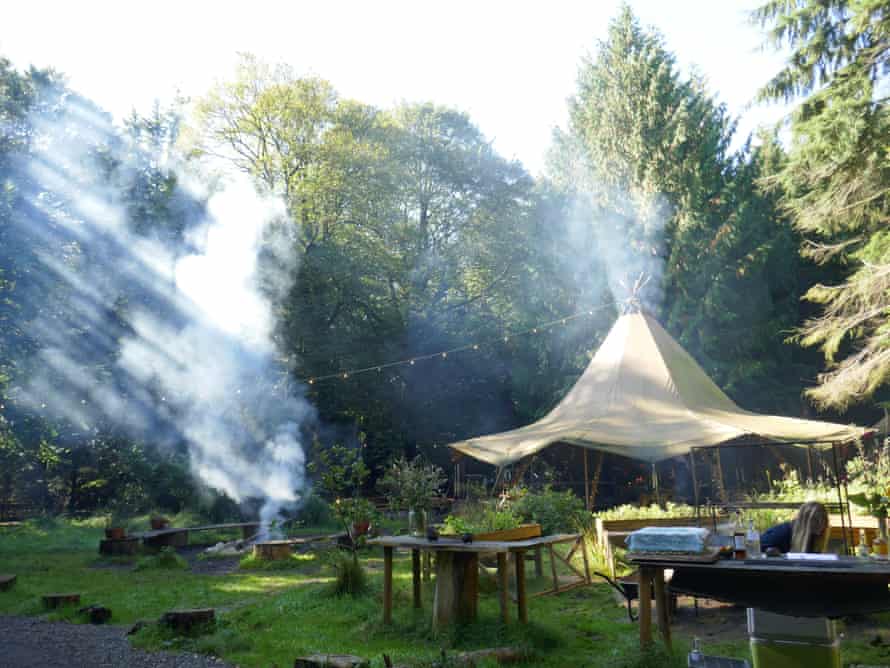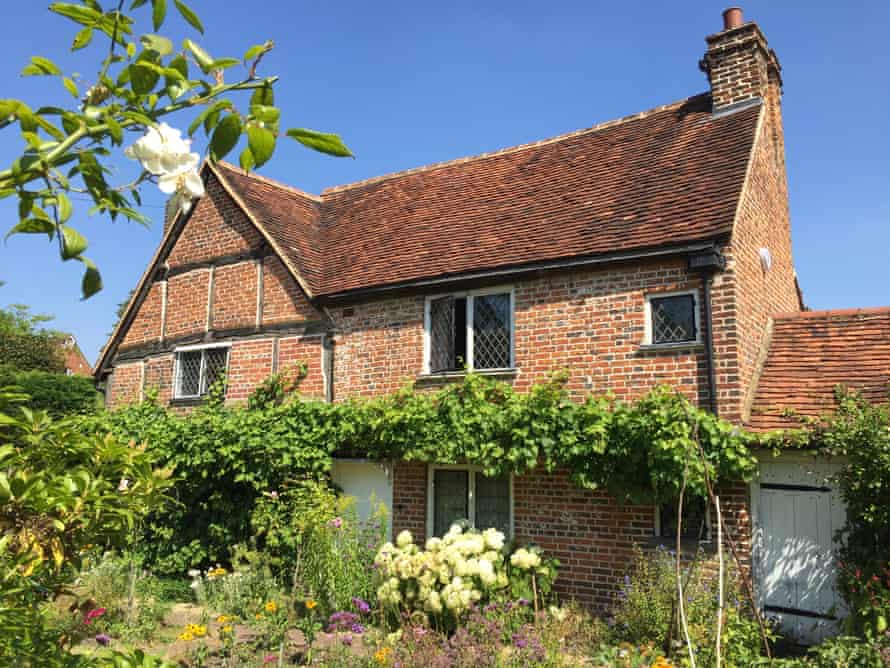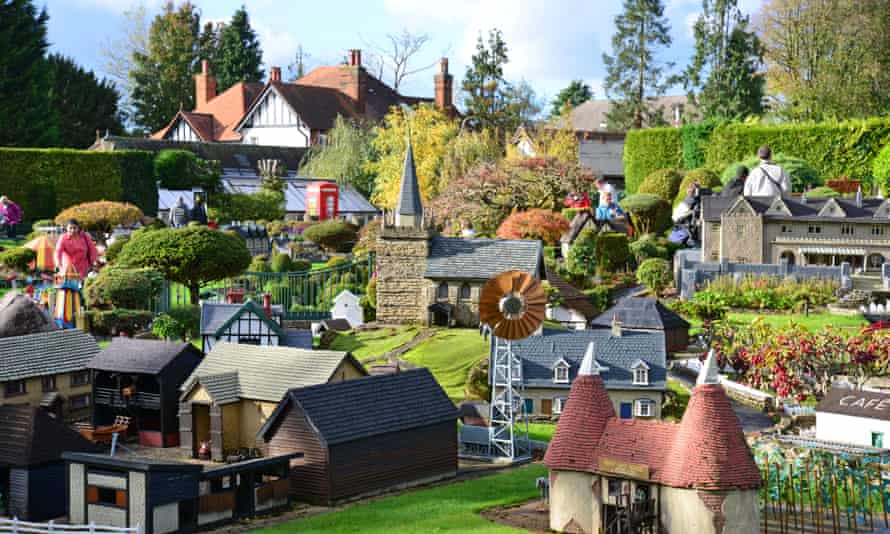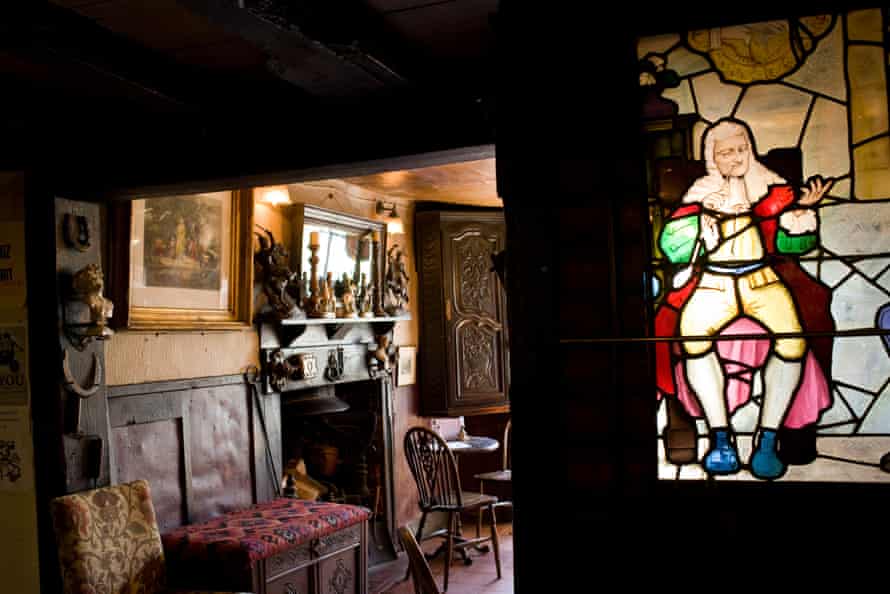Sunlight slants through the woodsmoke. Inside a big, fairy-lit tipi, tables are decked with candles and fresh maple branches. I’m just starting a five-day car-free break in the Chilterns, an Area of Outstanding Natural Beauty (AONB) with easy access by train, Metropolitan Line tube, and two new bus routes that started in August 2021. My favourite car-free walk in the area is a circuit from Tring station up the Ridgeway to Ivinghoe Beacon and back via the Ashridge Estate. I’m hoping for woodland walks, country pubs and seasonal produce, so a gourmet lunch under the trees feels like a perfect beginning. Outdoor dining company Nomadic has been hosting elegant meals here in Shrubs Wood for three years, sourcing fruit, veg and herbs from its garden nearby.
Today’s fungi-themed feast starts with a walk through the trees. Professional foragers Izzy (@rightsforweeds) and Ru (@londonwildfruits) lead us from glade to glade like woodland elves, pointing out edible and deadly toadstools with equal delight. They are particularly enthusiastic about a little row of hare’s-foot inkcaps, which range from a bullet-shaped bulb to a tall, upturned parasol, showing the “stages of mushroom morphology”. Lunch includes truffle-laced shiitake soup, hen of the woods on toast, roast halibut topped with ceps and chanterelles, and a pear and apple compote from the orchard. It’s clearly a winning formula: despite the eye-watering price tag of £99, everyone I talk to here to has been at least once before. Nomadic plans to kick off 2022’s feasts with some Valentine-themed meals in February and regular lunch dates from March, including events surrounded by April bluebells.

Getting here without a car helps both atmosphere and appetite. Bus 105 from Amersham stops 20 minutes away, or Nomadic can recommend a taxi from Chalfont and Latimer, but I decide to walk three miles from Chorleywood station, along my first short stretch of the long-distance Chiltern Way, which rambles for more than 100 miles through the AONB. I follow the route into the woods along Old Shire Lane. Squirrels chase each other through the chestnut branches, dislodging twinkling showers of last night’s rain on to shiny conkers that line the path like cobblestones.
A jay, pink with a flash of turquoise, lands nearby, red kites circle the sky and a tiny fieldmouse scurries into the long grass. Red kites, with their forked tails and 1.5-metre wingspans, were reintroduced in the Chilterns in the early 1990s and there are now more than 1,000 breeding pairs. It’s a great walk until I leave the Chiltern Way and spend the last three minutes dodging into roadside holly bushes to avoid the vans on flooded Gorelands Lane. A welcome drink by the campfire, involving crème de châtaigne liqueur and marigold petals, goes straight to my head.

The other guests are still toasting marshmallows and sipping pine needle tea round the bonfire as, four hours later, I shoulder my rucksack again and head round the corner to the Chilterns Open Air Museum (adult £7.50 online, coam.org.uk). This veteran collection of reconstructed local buildings has fruit-laden trees in the orchards, pumpkins and corn dollies in a mission room, and marrows for sale in the shop. But it’s not all thatched barns and cottages with patchwork bedspreads; there’s a tollhouse from High Wycombe and a prefab bungalow from Amersham, wartime Nissen huts and even an Edwardian cast-iron public loo. With Pinewood Studios nine miles away, the museum is a favourite film location.
I’m staying in the village of Chalfont St Giles, another mile along the Chiltern Way. The cheerful White Hart Inn, near the Quaker hamlet of Jordans, is a modern pub that offers an age-old-coaching-inn vibe with real ales and weathered beams; bedrooms are in annexes off the grassy beer garden (doubles from about £60 room only or £75 B&B, greenekinginns.co.uk). There are plenty of fancier places to stay in the Chilterns, but big, ready-to-ramble breakfasts and seriously comfortable beds make it a good walkers’ base. There’s food in the evenings too, with a classic pub-grub menu (£16.99 for three courses) and seasonal specials such as maple-and-rosemary-glazed plum pannacotta or an autumn spritz that mixes sloe gin, Aperol and prosecco.

There’s a bus stop outside the pub, but my first day’s walking is a circuit from the door, partly along the River Misbourne, which spends a little too much time within earshot of the main road. This is one of several routes near chalk streams in the Chilterns. The most rewarding is the 10-mile Chess Valley walk from Rickmansworth to Chesham, passing close to Chenies Manor, with its brick chimneys and gables and borders of lavender and cranesbill (£6, cheniesmanorhouse.co.uk).
The highlight of today’s walk is a visit to the old cottage where John Milton lived and finished Paradise Lost (£7, miltonscottage.org). The poet moved here from London in 1665, escaping the great plague; his friend Thomas Ellwood hired the cottage for him, calling it “that pretty box in Giles, Chalfonte”. The cottage garden, scented with pale-pink climbing roses and flowering marjoram, echoes Milton’s descriptions of Eden. There are dark bunches of grapes hanging from the century-old vine that wraps the brickwork (“the mantling vine / Lays forth her purple grape, and gently creeps / Luxuriant”) and red apples in the little orchard. It’s only after I’ve picked one (with permission) that I notice the statue of Eve nearby and a replica snake coiled round the tree trunk.
Bekonscot model village in Beaconsfield, next morning, is just as I remember it from childhood: a John Major-esque 1930s landscape of cricket on the green, trawlers in the quay and morris dancers in the town square (adult £11.30, bekonscot.co.uk). The children’s author Enid Blyton lived nearby. Her house, Green Hedges, is long gone, but a model remains at Bekonscot with a little Noddy car outside.

Beaconsfield is 20 minutes from my pub by bus and half an hour from London on the train. I meet friends at the station to hike in the hills under gold-tinted beech leaves and stop at the Royal Standard of England for a pint of Chiltern pale ale. Every log-fire-warmed corner of this ancient, rambling pub is crammed with decorative details: carved bears, unicorn tapestries, stained glass, tankards and toby jugs, even the curving side of an old ship.
Next day I catch bus 104 again to High Wycombe, 10 miles west, for another day of hiking and sightseeing. I stop off on the way for a picnic from Beaconsfield’s Tuesday market. Four of the Chiltern Hundreds buses link the two towns. Wycombe Museum reminds visitors that this town was once the world’s chair-making capital (free, wycombemuseum.org.uk). Many of the area’s beechwoods were planted in the 18th century to grow timber for the furniture industry. Another 10 minutes on bus 40 brings me to West Wycombe, where eccentric, 18th-century aristocrat Sir Francis Dashwood convened his Hellfire Club in caves dug out underneath the Chiltern hills (adult £8.50, hellfirecaves.co.uk). I wander a quarter of a mile into subterranean depths, past fanciful dioramas, before setting off on an undulating circuit through woods and fields, past the hilltop Dashwood Mausoleum.

Something about the Chilterns seems to inspire kids’ writers in particular. Alison Uttley wrote her Little Grey Rabbit books in Beaconsfield, and my last day is spent stalking Roald Dahl through the village of Great Missenden. I ride bus 105 past valley views to Amersham and then one stop on the train. This railway from London Marylebone is great for car-free access to the Chilterns. I’ve walked at least a dozen circuits from Wendover station, most recently in May this year at the height of a late, lush bluebell season. And I’ve caught the train to Aylesbury for the market, museum, Bowie memorial and bus to Waddesdon Manor, which also has a car-free Greenway from the last station on the line and a spectacular Christmas light trail until 23 January.
There’s a colourful year-round Roald Dahl museum with Willy Wonka-style gates (£4.90/£7.40 child/adult, goodjourney.org.uk) on Great Missenden High Street with leaflets outside suggesting village and countryside trails through the woods. A half-timbered house and red petrol pumps over the road feature in his stories. I follow Church Lane over the A413 to search for Dahl’s grave in the ivy-covered churchyard and find it under a bench-ringed beech tree with concrete BFG footprints in the grass nearby. Heading back to the village through parkland, I enjoy views across a lake to Missenden Abbey, where figures in white are playing croquet on the lawn.

Down the road, the Nag’s Head is covered in scarlet creeper. Inside, there are low beams, autumn roses on the tables, and seasonal fruit on the menu, from stone bass with late rhubarb to chocolate with poached apricots. The 15th-century pub is adding seven new bedrooms for next year. After butternut soup and cake with blackberry sorbet, I’m ready to set off again, past time-worn brick cottages with roses and honeysuckle straggling over the doorways. Reliance on cars is the most obvious downside of this rural idyll and I’m relieved to turn off a pavement-less road into trees again, where rustling leaves eventually overtake the noise of traffic.
At teatime, I’m sitting in the middle of a wood by a campfire while a blackened kettle bubbles above the flames. It feels miles from anywhere, but is just 20 minutes’ walk from Chalfont & Latimer station. David Willis teaches bushcraft, which he distinguishes from survival skills as being more about love of nature. Families and small groups spend hours with him in the woods, building dens, whittling spoons and rubbing sticks to make fire (£95pp, £150 family, davidwillis.info). He points out the different tactile qualities of the trees around us: claw-marked cherry trunks, muscular hornbeams, soft larch needles. There are badgers living nearby, and squirrels race past with sweet chestnuts. As I walk back towards the train, two roe deer stand transfixed in a sunset field of stubble and mewing buzzards wheel slowly over the woods.
Bus travel was provided by Carousel. Accommodation was provided by the White Hart. More information at visitbuckinghamshire.org and visitchilterns.co.uk
Nomadic’s next feasts take place in the afternoons and evenings 12-14 February with a Valentine’s theme, then amid bluebells 27 April-7 May



